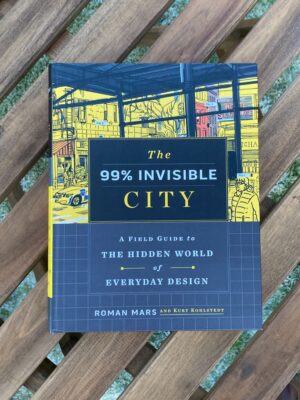What I’ve been reading this month

I haven’t got round to any of my Christmas books yet! Here are the seven books that are first on my “read in 2021” list.
The Heart’s Invisible Furies by John Boyne
It takes a certain pluck to choose as an epigraph a quotation from a fictional work ‘written’ by a character you created, as Boyne does for this exceptional 2017 novel. His quote is from Maude Avery who, a novelist and adoptive mother to the protagonist, proved to be a new addition to my list of favourite literary characters.
Characterisation is at the heart of this book. The book follows the life of Charles Avery from his birth in the months after the Second World War, through seven-year intervals to his seventieth year. Charles is Irish, but spends parts of his life in a number of different cities.
This book reminded me a little of opera, in that the plot is faintly ridiculous and jam-packed with slightly absurd co-incidences, but this didn’t really matter. The plot served only as a device to allow for deeper characterisation and to string together moments of high emotional drama, all set against the accelerated pace of change in social values which characterised the second half of the twentieth century.
Boyne deftly moved between very funny passages (even a little slapstick at times) and deeply moving scenes in a way that never jarred.
I feel like I’ve made this sound terribly dry, whereas (more than anything else) it was riotously good fun.
The Imaginary Museum by Ben Eastham
Published in 2020, this is Eastham’s creative essay on the appreciation of contemporary art. It is structured as a tour around Eastham’s imaginary museum, and weaves together elements of his own history with art, discussion of specific pieces, and the big contemporary debates about what ‘counts’ as art and who funds it.
This was a highly readable and enjoyable essay which covered many of the main talking points in contemporary art in a manner which was friendly to me a something of a novice. I thoroughly enjoyed it.
The Future of Serious Art by Bidisha
This is the first of two books I’ve read this month from of a series of five essays in the FUTURES series published by Tortoise Media in 2020. The series take inspiration from books published in the 1920s which attempted to give a broad and constructive view of the future in different spheres of life, with the aim of generating new ideas and stimulating thought and discussion.
This essay, by Bidisha, considers the future of ‘serious art’ (which isn’t particularly clearly defined). It is a clear and passionate argument about the importance of art. Bidisha reflects on the ‘Cool Britannia’ era of Labour government, and contrasts this with the approach to the arts during austerity and all that has followed.
I enjoyed this mostly for the opportunity of reading an artist’s take on the future, which I suppose is the point of the book!
The Future of Men by Grace Campbell
This is the second in the series of Tortoise Media FUTURES essays I’ve read. This is Grace Campbell, comedian and daughter of Alastair Campbell (who features heavily) on ‘the future of men’.
The book read a little like stand-up comedy, interspersed with three transcribed interviews (one with the author’s father, another with her boyfriend, and another with a gay best friend). The central arguments around feminism and toxic masculinity are agreeable enough, but covered to such a comprehensive extent elsewhere that I didn’t really feel this volume added much.
This was a short and funny read, but the better-known books by Ngozi Adichie and Grayson Perry are, to my mind, better guides to the same territory.
Art Deco Britain by Elain Harwood
Published in 2019, this was the Twentieth Century Society’s book by Elain Harwood on the finest Art Deco buildings in Britain. It was a coffee table format, with each of about a hundred buildings presented in facing pages with a full-page photo on one plate and a few paragraphs of text on the facing plate. The book is arranged into sections according to the original designed purpose of the buildings, starting with residential buildings (which I found least interesting – I would have basically reversed the order of the sections). There was also a good fifteen-page introduction to set the context.
I picked this up because I’ve been a member of the Twentieth Century Society for a while due to a mild interest in late c20 architecture, but didn’t really know anything about the British architecture associated with the earlier part of the century and the interwar period. I picked up quite a bit from this enjoyable introduction: there were quite a few buildings in here which I wouldn’t have recognised as Art Deco without Harwood’s explanatory text.
The 99% Invisible City by Roman Mars and Kurt Kohlstedt
This was Roman Mars and Kurt Kohlstedt’s book published earlier this year. It covered frequently overlooked aspects of urban design, based on the 99% Invisible podcast.
The book is structured in short sections, each giving a few paragraphs to a design element. I found these a bit frustrating: they were frequently far too short to include any real analysis. The book was also US-centric to a disappointing degree.
However, perhaps the most frustrating part of the book was the design decision to include line drawings rather than photographs. The elements of design discussed would often have benefitted from photographic illustration, and the line drawings often seemed completely disconnected from the text: they frequently didn’t even show the aspect of design under discussion.
As a result, while there were interesting parts, this book didn’t really work for me.
The Better Angels of Our Nature by Steven Pinker
Good grief, Pinker’s 2011 oft-mentioned tome on why violence has declined was a slog and a half. I should have known better: I didn’t enjoy Pinker’s style in, erm, “The Sense of Style”, so I’m not sure what convinced me to embark on 724 pages of his writing (plus 1,955 endnotes for good measure).
The central arguments in this book were interesting, and there were nuggets of gold to be found. But Pinker has an exceptionally irritating habit of citing way more examples to illustrate a point than I really want to wade through.
At the micro level, this is merely eye-rolling (eg listing ten common expressions where a couple would do, or four generic names where ‘Tom, Dick and Harriet’ would be good enough for most writers).
At the macro level, it starts to undermine his case. He uses the original published findings of the Zimbardo prison experiment and the Milgram experiment to illustrate a couple of his points, despite these having been roundly debunked, and it becomes hard to engage in the cognitive dissonance necessary to take the 72 other examples cited for each of these points on trust.
The style was so annoying that it’s taken me months to get through this, reading bits between other things. But I suppose there were enough points of interest to keep me coming back. I don’t think I’ll be reading any more of Pinker’s books, though.
This post was filed under: What I've Been Reading, Ben Eastham, Bidisha, Elain Harwood, Grace Campbell, John Boyne, Kurt Kohlstedt, Roman Mars, Steven Pinker.






